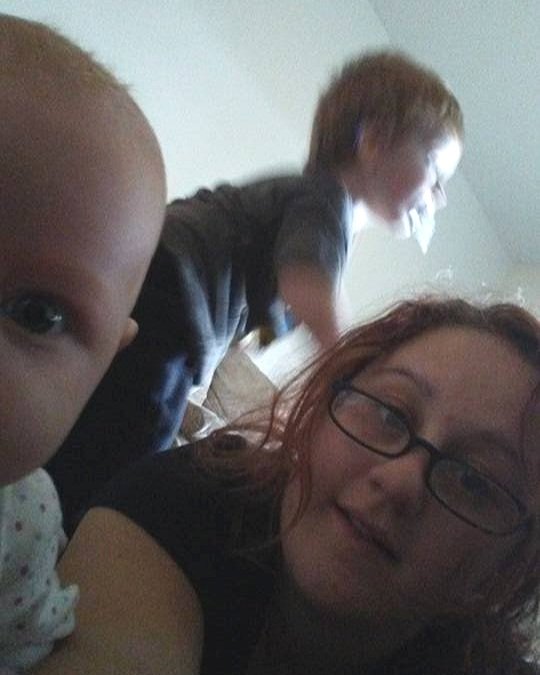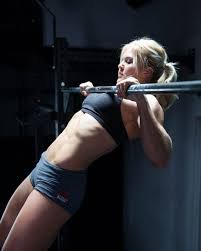Busy Mom Exercises - by kid’s age group
As a busy mom, time for yourself is hard to come by. Someone is always needing or expecting you. Work. The kids. Partner. Friends. Family…. The list goes on. Taking care of your loved ones is so rewarding in so many ways. You want to be able to play and keep up with your kids as they grow. Which means taking care of our health too, both physically and mentally.
But where do you find the time?
Ages 0-2 years
These are the years they need you to do things for them the most. That can make self care time scarce. Here are 3 exercises to fit into your routine.
Being climbed on while trying to workout hahaha
Figure 8 walk
This exercise can be done while rocking your baby to sleep!
Walk in a figure 8 pattern while swaying and/or bouncing your precious little one to sleep. Make sure to switch directions and try to stand up straight (easier said than done while holding your baby). This will help with posture (build a stronger mid back) and the walking and changing directions will work your hips and keep you moving. You can even add a box squat on a chair or the bed. Figure 8 walk, lower into a squat to tap the bed, stand back up and continue the figure 8 walk.
2. Wall sit
Lean back on a wall and squat as close to your thighs being parallel to the ground as possible, knees at a 90 degree angle. Hold for 30 seconds for 3 sets and progress up to two and a half minute holds. Keep your core active. You can add weight if you’d like (ie: have your little one sit on your lap while you do it). This works the intrinsic core, stabilizer muscles, quads, and glutes. It’s also great for snack time while your kiddo is sitting down eating instead of in your arms. If you have a little one who doesn’t like being put down you can hold them while you do this.
3. Squat to press
Once they are old enough to be tossed in the air and giggling, give this one a try!
While holding your little one at your chest height, squat down and as you come up lightly toss or lift them above head height. Catch and/or lower back to chest height and go back into a squat. Repeat for 10-15 reps for 2-3 sets and enjoy the giggles while getting stronger! This works your core, back, chest, arms, and legs. Full body.
Ages 3-5 years
Now, your little one is starting to run, climb more, kick and throw balls, and gaining some better coordination and agility. Here are some exercises that you can do either with them or while they play.
MOM-ster (monster) walk
They love being chased! Why not make exercise a game?! You can do this with or without a band. Adding a band will cause more tension on the glute medias so keep those knees in line with the toes, don’t let them fall inward. Dip into a shallow (or deep as this gets easier) squat and chase your little one while making monster sounds! The giggles and squeals will be so worth it! All while strengthening your quads, glutes, and abductors. Maintain an active and engaged core as well to help with bracing (check out the next article for more on core stability for more).
2. Walking lunges
Running around the house cleaning, cooking, and chasing your little one keeps you on your toes. Make a portion of your day lunges from task to task instead of walking. You can even do them backwards as a progression. Lunges work your quads and glutes and challenge stability.
3. Hop scotch
Draw some hop scotch squares and challenge your agility. Hopping is great for ankle and knee stability and power. It’s great for working your quads (you can make your jumps and hops deeper for more of a challenge), calves, shins, glutes, and helps with hip stability. You can add some in and outs as well by hopping to the side and back into the squares too.
Ages 6-10 years
Around this age they decide to run off and play with their friends more. While you are still close by, this does open up some time. You can even involve them in the activities!
Kickball
That’s right, kickball! This is a fun game, great for cardio, that can also incorporate some quality family time. Running from base to base will incorporate cardio and agility.
2. Agility Drills
Many kids love running. Make a game out of it. These will help improve coordination, ability to accelerate and decelerate, and ability to change direction quickly and safely. Plus it’s good cardio. Grab some sidewalk chalk or cones and give these a try:
Lateral line hops
1, 2, back to 1, repeat
These help with inversion and eversion of the ankle. This helps prevent rolling your ankles and increases your ability to change direction. All you need is a straight line on the ground and you’re good to go! Start standing sideways to the line and just hop back and forth over it. You can progress this by starting with two legs, then one, and then increasing the height or distance you jump.
2. Cross hops
This is similar to the hops above but with an added portion. Find or draw two lines crossing each other (anywhere two sidewalk squares meet will work). Start in the lower, right hand side and hop forward (crossing the line in front of you), then to the left (crossing the line), then back (over the line that is now behind you) and then to the right (back where you started). Try to land softly (bend in the knees). Repeat 5 times in each direction and then switch. Start with two legs, progress to one, then increase the distance and/or height of the jump.
3. Lateral ladder shuffle
Think “in in out, in in out” repeat
You can do this with a drawn chalk ladder, agility ladder, or an imaginary ladder. Start at one end parallel to the ladder. Step to the side into the ladder with your leg that is closest. Next, as that foot is going to step to the other outside end of the ladder, hop your other foot into that same square. Once both feet hit their mark, move the leg that is in the square to the next one up and repeat. Up and down the ladder 4 times each direction. To add a challenge, go backwards.
4. 3 cone speed drill
Set up 3 cones (cans, chalk, any object really) in an L shape, roughly 10 feet apart (less is fine if you’re limited on space). Start at cone 1, run around cone 2, to cone 3, turn around quickly (pivot) and start back at 1. Do 5 in one direction and 5 in the other. This increases bodily control: agility, acceleration and deceleration, and joint stability and force.
3. Obstacle course
There are so many ways to go with this one! Get creative with it. Grab mats, pieces of paper, cones (soup cans work too), and toys and practice jumping to and from, up and over, zig zag around, climb, etc. This is great when the kids lead. Fortnight is a very popular game, for example, and can be played in real life similarly to laser tag with obstacles. Floor is lava is another great game to get them into obstacle courses with you. You can play tag jumping and running around the course as well. This is great cardio, endurance and agility work made fun!
All ages
Jungle gym exercises
Lots of time is spent at the park during these years. Here’s how you can use that time to exercise while they play.
Pull ups
The monkey bars are perfect for pull ups. Be sure to keep your lats engaged by keeping your shoulders down and back. This works your latissimus dorsi, trapezius, base of your pecs, biceps, and abs. If you can’t do a pullup yet, start with negatives. For negatives, start by jumping or stepping into the above bar position and slowly lower down (4 seconds) for 4-10reps. Repeat for a total of 3 sets. You’ll have a pull up in no time!
2. Inverted row
Lower bars are great for this. This works your lats, traps, rhomboids, infraspinatus, teres minor, erector spinae, posterior delts, and biceps. It’s a great way to work on grip strength, improve scapular retraction (which will improve posture), and engages your whole body. It also will contribute to being able to do pull ups.
3. Push ups
If you can’t do a push up on the ground yet, there are steps and platforms at the park that you can use to elevate your hands. Push ups work your chest, triceps, and core.
4. Hanging leg raises
Hanging from a bar, draw your belly button to spine (brace) to activate your intrinsic core, and bring your knees towards your chest in the center and lower back down at a controlled speed. Repeat diagonally to add some rotation. Straight leg is harder than bent knees. This works your rectus abdominis and obliques.
5. Body weight squats
Feet roughly hip width apart, core braced, slowly lower into a squat, pause, and come back up driving through your heals. This works your quads and glutes.
The hardest part is getting started. Just take the leap and get moving mama. Future you will thank you. For more exercises or workouts tailored to your needs and goals, send me a message through the contact page.



















